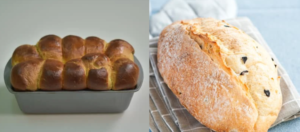Beef Tenderloin Vs Entrecote: What You Need To Know
What To Know
- In contrast to the tenderloin’s delicate nature, the entrecôte, also known as the rib-eye steak, is a robust and flavorful cut.
- Cut from the rib section of the animal, the entrecôte is well-marbled with fat, giving it a rich and intense flavor.
- Both beef tenderloin and entrecôte are excellent choices for grilling, but the entrecôte’s robust flavor and ability to withstand higher temperatures make it a preferred choice for grilling enthusiasts.
The world of fine dining offers an array of tantalizing meat cuts, each with its unique flavor and texture. Among the most revered are beef tenderloin and entrecôte, two cuts that have captivated culinary enthusiasts for centuries. In this comprehensive guide, we delve into the intricacies of beef tenderloin vs. entrecôte, exploring their distinct characteristics, culinary applications, and which one reigns supreme for your next gastronomic adventure.
The Beef Tenderloin: A Tender Symphony
The beef tenderloin, also known as the filet mignon, is a prized cut renowned for its exceptional tenderness and buttery texture. Nestled within the loin primal, this muscle is rarely used, resulting in its unparalleled softness. Its fine grain and delicate flavor make it a favorite among discerning diners seeking an indulgent experience.
The Entrecôte: A Robust and Flavorful Delight
In contrast to the tenderloin’s delicate nature, the entrecôte, also known as the rib-eye steak, is a robust and flavorful cut. Cut from the rib section of the animal, the entrecôte is well-marbled with fat, giving it a rich and intense flavor. Its coarser grain and pronounced marbling contribute to its juicy texture and satisfying chew.
Tenderness: A Tale of Two Cuts
When it comes to tenderness, the beef tenderloin reigns supreme. Its lack of connective tissue and fine grain make it melt-in-your-mouth tender, requiring minimal effort to cut or chew. The entrecôte, while still tender, offers a more substantial bite due to its coarser grain and fat content.
Flavor: A Symphony of Umami
Both beef tenderloin and entrecôte offer distinct flavor profiles. The tenderloin boasts a subtle and refined flavor, allowing the natural sweetness of the meat to shine through. The entrecôte, on the other hand, is renowned for its rich and robust flavor, derived from its abundant marbling. The fat content in the entrecôte renders as it cooks, infusing the meat with an umami-packed taste that is sure to delight your palate.
Culinary Applications: From Grilling to Roasting
The different characteristics of beef tenderloin and entrecôte lend themselves to various culinary applications. The tenderloin’s tenderness makes it ideal for quick-cooking methods such as grilling, pan-searing, or roasting at high temperatures. Its delicate flavor pairs well with simple seasonings and sauces that complement its natural sweetness.
The entrecôte’s robust flavor and coarser grain make it a versatile cut suitable for both grilling and roasting. Its ability to withstand higher cooking temperatures without becoming tough allows for various cooking methods, including slow-roasting to enhance its rich flavor. Entrecôte is also commonly grilled to achieve a perfect crust while preserving its juicy interior.
Cost and Availability
Beef tenderloin is generally more expensive than entrecôte due to its limited availability and high demand. As a premium cut, it commands a higher price tag. Entrecôte, on the other hand, is more widely available and typically more affordable, making it a more accessible option for budget-conscious diners.
The Verdict: A Matter of Preference
Ultimately, the choice between beef tenderloin and entrecôte depends on your personal preferences and the occasion. If you seek an ultra-tender and subtly flavored cut, the beef tenderloin is your ideal choice. For those who appreciate a robust and flavorful steak with a more substantial texture, the entrecôte is the perfect indulgence.
Which Cut Is Right for You?
To determine which cut is best for you, consider the following factors:
- Tenderness: Beef tenderloin is the undisputed champion of tenderness.
- Flavor: Entrecôte boasts a richer and more intense flavor.
- Cooking Method: Tenderloin is best suited for quick-cooking methods, while entrecôte is versatile for grilling and roasting.
- Cost: Tenderloin is typically more expensive than entrecôte.
Basics You Wanted To Know
1. Which cut is better for grilling?
Both beef tenderloin and entrecôte are excellent choices for grilling, but the entrecôte’s robust flavor and ability to withstand higher temperatures make it a preferred choice for grilling enthusiasts.
2. What is the ideal cooking temperature for beef tenderloin?
For a tender and juicy beef tenderloin, cook to an internal temperature of 135-140°F (57-60°C) for medium-rare.
3. How do I achieve a perfect crust on my entrecôte?
To create a flavorful and crispy crust on your entrecôte, season it generously with salt and pepper and sear it over high heat for 2-3 minutes per side before reducing the heat and continuing to cook to your desired doneness.
